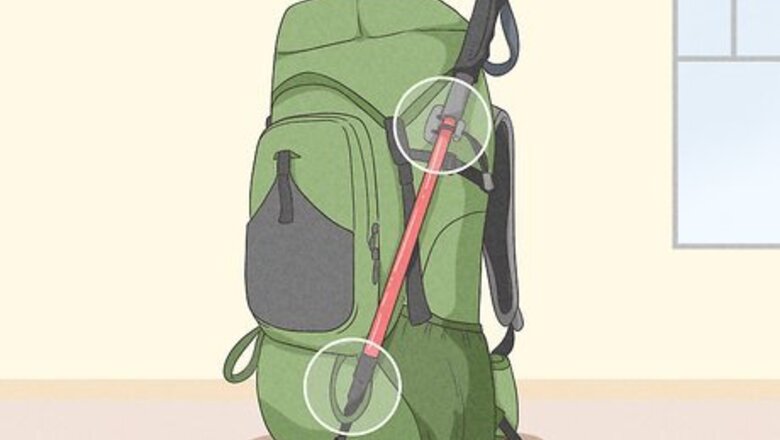
views
On the Road or Trail

Use a hiking backpack with dedicated loops to carry poles with ease. If you have a hiking backpack, it probably has dedicated loops for trekking poles. Shorten your trekking poles and look on the sides and shoulder straps for two sets of identical loops. Pull the bottom loop out and insert the tip-end of your trekking pole. Then, slide it down and pull the elastic loop on top out. Pull the handle up through the strap and release it to attach your poles to the bag. Keep the handle above the top strap so that the thicker portion of the pole catches on top of the loop. Unless you carry the backpack upside down, this will keep your trekking pole from falling out. Some backpacks have adjustable straps instead of elastic loops for this. For these bags, you tighten the straps the same way you tighten the shoulder straps on a regular backpack, with the plastic strap adjusters.

Place your trekking poles inside of your backpack if you don’t have loops. If you have space in your bag, you can always put the trekking poles there. Shorten each pole and slide them vertically into a corner of your bag so that the handle sticks out a little at the top. Try to choose a corner where there aren’t a lot of hard objects floating around to keep the poles from getting dinged up in your bag. Unless you have a giant backpack, your handles are probably going to poke out the top of the bag. The tips are unlikely to cause any damage in the bag if they’re just resting there, but you can always put a soft pair of socks under the tips to play it safe if you’d like. Some hiking bags have dedicated pockets in the lining of the backpack for trekking poles. Insert your poles here if you have these thin, long pockets sewn into the sides of the bag.

Use a carrying case to stow them on your back if you don’t have a backpack. If you aren’t bringing a giant hiking bag on your journey, grab a carrying case for your trekking poles. Shorten the poles, insert them into the bag, and toss the bag over your shoulder to carry the poles on your back. You can always use a c-clip and attach the strap on the carrying bag to the shoulder strap of your backpack. This may be a little unwieldy, but you can always leave one hand on the trekking pole bag to steady it while you walk.
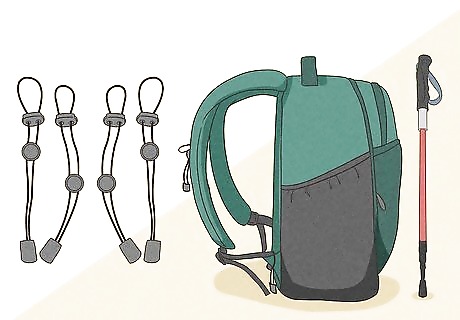
Buy trekking holsters to stow hiking poles on a regular backpack. Purchase some trekking holsters online and wrap each cord around your shoulder strap and the backpack’s belt on each side. Tighten them with the drawstring and slide your trekking pole in between the shoulder strap and the cord. This is a great way to turn any regular backpack into a hiking backpack! You may be able to create makeshift holsters with a pair of small, tight bungee cords, just by looping the cord around the belt and shoulder strap.
On a Plane
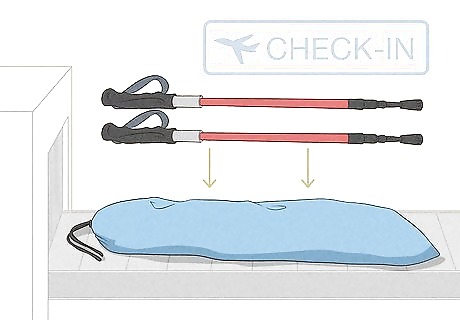
Check your trekking poles in a dedicated carrying case if they aren’t collapsible. If you have old school trekking poles that can’t be adjusted or shortened, your best bet is to purchase a dedicated carrying case. Simply find a carrying case online that’s long enough for your poles and place them in the opening at the top. Close the latch or secure the bag and check it separately at the airport. A hard case is safer than a soft case if you’re checking it in for a flight. Many trekking poles on the market are collapsible. If you’ve got an older trekking pole that can’t be adjusted, it may be time to make an upgrade! You can totally put adjustable trekking poles in a carrying case and check them separately if you’d like, but it’s probably going to easier to just pack them with your other luggage. A shortened trekking pole will fit in basically any bag.
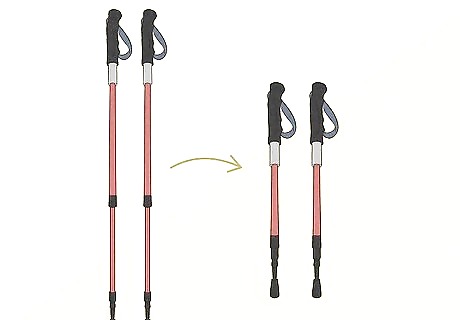
Shorten extendable trekking poles before packing them in a checked bag. For most models, you shorten the trekking pole by pressing a button near the handle and pulling the two thinner straps out. Then, you unlock a latch at the bottom and pull the bottom half of the pole up before closing the latch to lock it in place. Do this for each pole before stowing it. Some trekking poles have twistable joints that you unscrew to slide thinner portions of the pole into the thicker sections and shorten them. If you can’t figure out how to shorten your trekking poles, refer to the instruction manual to figure it out; there’s a little variation from model to model.
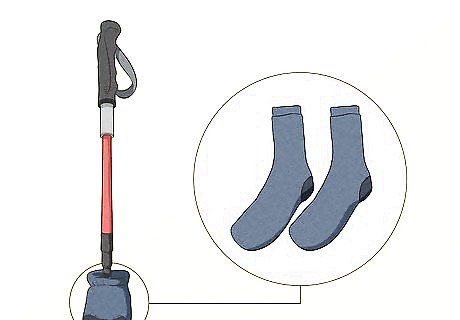
Wrap thick wool socks and shirts around the tips of your poles. The pointy tip at the end of the pole may tear the lining of your bag if you don’t insulate it. To protect your bag and the other items in it, grab some thick socks and pull them over each of the tips. Then, grab a few thick shirts or sweaters and wrap them around the socks. You can use rubber bands to hold the fabric together if you’d like. Don’t use a sock or shirt that you’re particularly fond of. The tip of the pole isn’t super sharp, but it still may poke a small hole through the fabric.
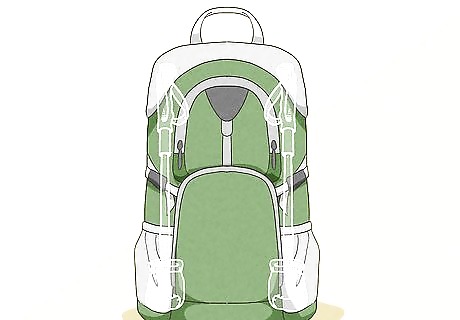
Place the trekking poles in a corner of your bag. Your trekking poles may get bent if you just toss them in the middle of your bag and they slide around in transit. To minimize the odds that they get damaged, set them along a corner of your bag. Any open side will work. You’re better off doing this before you put anything else in your bag so you can pack softer things around the trekking pole.
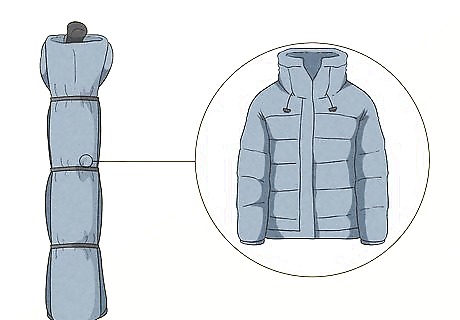
Insulate the trekking poles with a puffy coat or something to protect it. If you’re bringing a soft coat or sweater, lay it down over the trekking poles. Then, insulate the poles to the best of your ability by laying clothes on top of and in between each pole. The softer you can make the area around your trekking poles, the less likely they will be to bang against something hard in your bag and bend. Once you’ve protected your trekking pole with soft clothes, finish packing the remainder of your bag. It may be a good idea to put heavier objects on the opposite side of the bag just to play it safe.
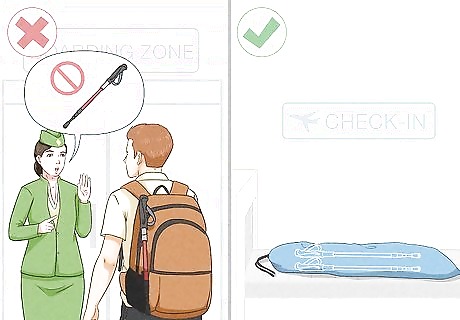
Do not attempt to bring your trekking poles on your carry-on. You cannot bring trekking poles on to an airplane. While a handful of smaller countries may allow it, the overwhelming majority of countries will not let you through security with a trekking pole. This includes the EU, United States, and the UK, so you must check the trekking poles in a separate bag if you’re flying with them. You won’t have a problem checking a bag with trekking poles in it.




















Comments
0 comment